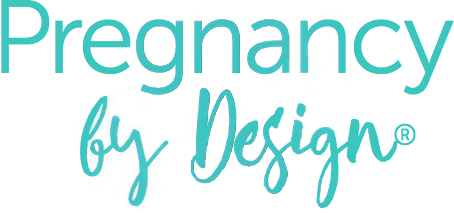Every mom looks forward to meeting her baby with happiness and excitement. However, given the COVID-19 pandemic, bringing a baby into the world right now can be a bit unnerving! The good news is that it need not be this way! Now is a great time to gain education and explore your options for birth during COVID-19.
If you’re like many expectant parents, you may be a bit unsure of where or how to begin to prepare for birth in today’s current environment. Even under normal circumstances, taking time to prepare for your birth is important.
Here are the 4 key things you can do right now to help reduce your risk for unnecessary birth interventions and put you and your baby in the best position for a positive and healthy birth.
1. Person (YOU)
Why are you, the person giving birth, so central to the process? If you are pregnant, you are the one who was given the special job of carrying and delivering your baby. You are built and designed to do this!
The key to having a successful birth – one that gives you and your baby the best start possible, and is not traumatizing – is choosing a Provider, a Place, and creating a birth Plan that all work together around you, the person giving birth. Your values, history, and even your personality all play a large role in your decisions and in how you communicate those decisions to your birth care team.

Your mental “game” during birth also plays a significant role in how you cope and make decisions during labor. Many women don’t realize how important these “inside” factors are until they’ve been through the birthing process once already. If you haven’t yet explored your underlying thoughts, feelings, hopes and fears about birth, you can complete an in-depth questionnaire to answer these questions and learn how these factors affect your birth.
2. Plan
Why plan? The sad reality is that just hoping things will go well without any plan is not enough when navigating today’s maternal healthcare system.
Our culture doesn’t do a good job of preparing women with the information needed to have healthy, normal pregnancies and births.
Most expectant couples are unaware that:
- 32% or 1 out of 3 women in the U.S. will have a c-section. This is double the World Health Organization’s recommended rate of 10-15%
- The number of women dying in childbirth each year has nearly doubled in the last 2 decades!
- 1 out of 3 women today are experiencing traumatic births, & many more are disappointed and unhappy in the outcome of their births
These are pre- COVID-19 birth statistics and shed light on the fact that the U.S. maternity care system was in crisis long before the Coronavirus pandemic. Now, maternity care is being further affected by COVID-related restrictions that can negatively affect a mother’s timely access to care and the support people she needs during birth.
I don’t share this with you to cause fear, but rather to empower you toward a knowledge that you were designed to bring your baby into the world. Most of our culture’s beliefs about birth, as depicted on screens, tell us stories of panic and emergency medical interventions. You may have even heard stories from well-meaning friends or family members about how hard and long their labor was.
What we hear and think about birth is really powerful in shaping how we believe labor will go for us too. This is why gaining education about your body’s design and ability to give birth, and making truly informed choices, is so instrumental. Research has shown that the number one predictor of having a positive birth experience when women feel supported and have autonomy (play an active role) in their birth decisions.
The top 2 ways you can begin to play an active role in your birth during COVID-19 are to:
- Take a physiologic childbirth class to give you a thorough birth knowledge base, and
- Write a detailed birth plan reflecting your values and preferences.
Childbirth education makes a huge impact on how you choose to bring your baby into the world. The more you learn about each stage of labor and how it unfolds, the more inspired, amazed, and confident you will be in your ability to give birth during COVID-19. A good natural birth course should help you gain a better understanding of your options and your desired birth preferences. You may consider an online class as you can take it from the comfort of your own home and go at your own pace.
A Physiologic Childbirth Class Should Explore Topics Like:
- How your body works, how birth works
- Choosing a provider that aligns with your beliefs
- What to expect in the world of maternity care
- The choices and decisions you’ll face in childbirth
- Tools to identify what needs you have
- How your partner can help support you
- Tips and tricks for managing labor
- Confidence and positivity about birth
Next you will want to write your preferences down in a birth plan. A birth plan helps you to define and express your birth preferences. Many pregnant women already have preferences that lean more toward physiologic birth even if they are not acquainted with the term.
A Birth Plan May Help You Define Preferences Such as:
- A private, peaceful birth setting
- Being free to eat or drink during labor rather than being restricted to ice chips and clear liquids
- Ability to move around during labor
- Delayed cord-clamping
- Labor pain relief measures other than pain medication, such as birth ball, water birth tubs, shower etc.
- Time to bond with baby immediately after birth
There are many resources online that can help you formulate your plan for birth during COVID-19. The Complete Guide to Writing Your Birth Plan is one such resource that our team at Pregnancy by Design developed. This free resource offers step-by-step videos on everything from interviewing a birth provider to choosing a birth setting, writing a labor action plan and a 1-page birth plate template to talk over with your birth team.
3. Provider
Choosing a prenatal care provider either a Midwife or an OBGYN who will honor your birth plan is one of the most important factors you can control. Even if you have already chosen a provider, you will want to make sure you are with a provider that aligns with your beliefs and philosophies about birth. Your choice of birth provider is one of the largest factors in whether you will receive the type of care you desire, and your likelihood of birthing by C-section.
How do you know if your birth provider is really a good fit for you? Often women find out that their provider has a different belief about birth than they do and many times they find this out too late in the game – often, not until they are actually in labor! To avoid feeling blindsided later, do some research now – interview your provider with specific questions, and ask around and see if this provider really is supportive of your choices.

After you have filled out your birth plan, ask your provider some additional questions to see if they align with your birth preferences. One caveat – you can write an amazing birth plan, but if your birth provider or birth place usually does birth a different way from what you have written, it is unlikely that your plan will succeed. (Here is a post on why birth plans fail). Are all parts of your birth plan working together toward your preferred birth? Know that it really is never too late in pregnancy to switch care providers!
As you consider what type of birth care provider to work with, be sure to interview a Midwife as one of your options, especially if you are interested in a low-intervention birth. Midwives are experts in normal birth and have shined during COVID-19. Studies have found that low-to-moderate risk pregnant women who receive midwifery care (or have access to collaborative care that integrates Midwives) are more likely to experience low-intervention, spontaneous vaginal births, be satisfied with their care, and are less likely to have a first cesarean delivery – which improves outcomes for subsequent births.
In light of the Coronavirus, switching to a Midwife may offer you more accessible, and less restrictive, options such as an out-of-hospital birth. Many women think Midwives only deliver at home but many also deliver in the hospital and birth centers whereas OB’s tend to deliver in the hospital setting only.
4. Place

The place you choose to give birth is equally important to your choice of provider. Not all places are equal!! When you choose a place to give birth, your odds of having C-section are essentially the same as that hospital’s C-section rate. Would you prefer your chances for a C-section to be 1 in 3, or 1 in 10? A hospital or birth center’s c-section rate should be information that you can find ahead of time. As reported by Consumer Reports, your biggest C-section risk may be your hospital with rates varying greatly between hospitals, even within the same community. You can find out more about the care provided in each hospital you are considering on the Leapfrog Group website. When considering having a hospital birth also consider looking for the Baby Friendly designation. You can find a list of baby friendly hospitals here.
Due to COVID-19, many families are seeking out-of-hospital birth settings and having better than average outcomes. Perhaps you are considering the various risks and benefits of giving birth in the hospital, but do not know much about out-of-hospital birth options (homebirth or birth center), or are wondering whether these options are safe for you and your baby.
The safety of out-of-hospital birth has been studied and shown to be a viable option for many families. A large international study shows that the risk of perinatal or neonatal mortality is no different whether the birth is intended to be at home or in a hospital.
The safety of birth center care specifically has been demonstrated in several studies including the National Birth Center Study and the San Diego Birth Center Study. The largest study to date, the National Birth Center Study II, gathered data from over 15,000 women who had planned to deliver at a midwifery-led freestanding center birth across 33 states. The study found that 92.8% achieved a normal spontaneous vaginal delivery, only 6.1% had a cesarean delivery, and 84% of women gave birth at the birth center with an urgent transfer rate of less then 2%. There were zero maternal deaths.
A birth center may be a great alternative if you are uncomfortable birthing at home but still desire a home-like environment. (Here is a post that looks deeper at the differences between hospitals and birth centers).
A Birth Center May be a Good Choice for a Variety of Reasons Including:
- Lower risk of Cesarean. Birth centers have an average c-section rate of 6% (only about 1 in 15 women) compared to 32% average in the hospital setting (about 1 in 3 women have c-sections in hospitals).
- Comfort. Birth centers typically offer more amenities such as larger beds, birth tubs, birthing balls and stools and other comfort measures and tools to help you find the most comfortable position.
- Non-medical Interventions. Birth centers and midwifery care usually offer non-medical, non-invasive options first when help is needed to encourage labor progress or relieve labor pain. Certain medications are available at birth centers, but are not usually the first option that is presented. Women who desire a more natural approach to birth may feel much more comfortable in this environment.
- Support and Individualized Care. Birthing centers tend to have a small staff of Midwives who will get to know you throughout your pregnancy and will be there to attend you during your birth.
- Cost. The cost of birth center care is generally around half of that of the hospital (though costs vary by state).

As you do the work of planning for your birth during COVID-19, remember that all aspects of your birth preparation should work together toward the birth you desire. It’s impossible to guarantee a specific birth outcome; that’s true. Labor is different for every mother and baby. But the bottom line is that every woman should be given the opportunity to know and prepare herself well, and the autonomy to make birth care choices that center around her specific needs.
Disclaimer: Pregnancy by Design’s information is not a substitute for professional medical advice or treatment. Always ask your healthcare provider about any health concerns you may have.
Cited Research:
Hutton E., Reitsma A., Simioni J., Brunton G., Kaufman K. Perinatal or neonatal mortality among women who intend at the onset of labour to give birth at home compared to women of low obstetrical risk who intend to give birth in hospital: a systematic review and meta-analyses. EClinicalMedicine. 2019; 14: 59-70
Stapleton SR, Osborne C, Illuzzi J. Outcomes of care in birth centers: Demonstration of a durable model. Journal of Midwifery and Women’s Health. 2013. Available at: http://onlinelibrary.wiley.com/doi/10.1111/jmwh.12003/full.



 How to Get a Good Gut Microbiome For Your Baby
How to Get a Good Gut Microbiome For Your Baby






Leave a Reply